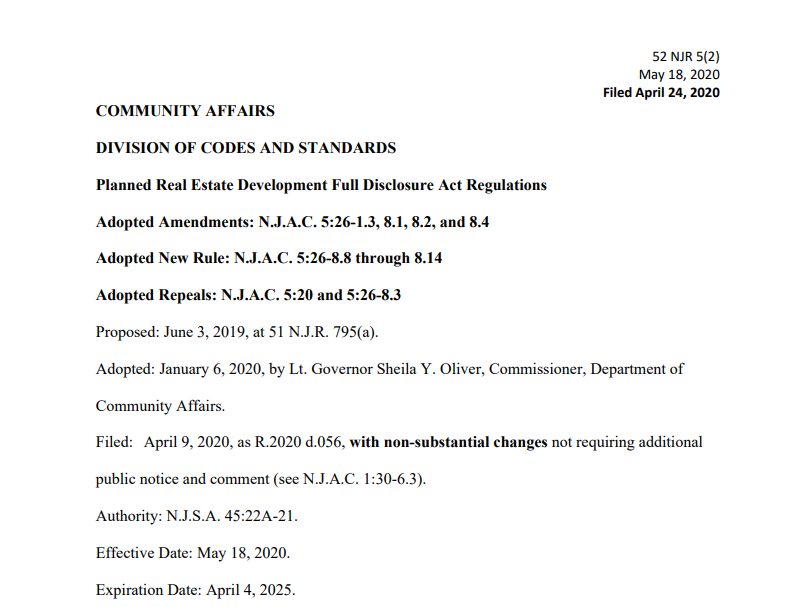
Open Board meetings are generally the most stressful part of any board member’s tenure. We all know that people who come to open meetings are usually not there to let the board know what a wonderful job they are doing. Instead, at best, they are there to listen, note problems and offer suggestions and, at worst, they are there to complain, berate and embarrass. In spite of this, open board meetings should be embraced.
Open meetings are required by law. Both the Condominium Act, N.J.S.A. 46:8B-13, and the Planned Real Estate Full Disclosure Act, N.J.S.A. 45:22A-46, require that, with limited exception, if the Board is going to make a binding decision, that decision must be made at a public meeting open to attendance by all unit owners1. This means that the membership must be allowed to watch. This does not mean that the membership participates in the decision. Further, all unit owners must have been given adequate prior notice of the meeting. The notice requirements are ordinarily specified in each association’s by-laws although N.J.A.C. 5:20-1.2 actually defines “adequate notice” in the condominium context and this section might be applied by analogy to home owners associations.
Topics specifically excluded from having to be decided upon at an open public meeting and reserved for executive session are:
(1) Any matter the disclosure of which would constitute and unwarranted invasion of individual privacy. Often this involves debtor account collection decisions.
(2) Any pending or anticipated litigation or contract negotiations. Often this involves transition decisions and vendor negotiations.
(3) Any matters falling within the attorney-client privilege, to the extent that confidentiality is required in order for the attorney to exercise his ethical duties as a lawyer. This generally includes attorney-client communications. Although there are exceptions, when in doubt, attorney communications and decisions requiring substantive attorney involvement should not be made at open meetings. Note that involving the attorney in a decision cannot be used as a sham to permit decisions that would otherwise be required to be made at an open public meeting to be made in a closed session.
(4) any matter involving the employment, promotion, discipline or dismissal of a specific officer or employee of the association.
Besides open meetings being required by law, they are the keystone of Association communications. Association members can hear, first hand, what the Board is doing. Further, open meetings provide a forum where Board members can stay in touch with membership concerns via the public comment session. Although associations are not compelled to have public comment sessions, not having public comment sessions is unwise. Although it must be explained that the membership does not participate in the decision making and they do not vote, excluding public comment is a recipe for mistrust, unrest and resentment.
Particular open meeting formats vary and are beyond the scope of this article however, each association should work with its manager, attorney, accountant, engineer etc. as the case may require to formulate the format that works best. If it is anticipated that uncomfortable issues will be raised, they should be discussed with management and professionals prior to the meeting. Often board members and other residents hear of “hot topics” long before others do. Anticipation and preparation are essential to smoothly addressing “hot topics”. In fact, more often than not, “hot topics” are better first raised by the board at open meetings rather than the members. Membership generally appreciates this preemption. The Board appears more informed and involved and it often steals the thunder of those who may be lying in wait to spring a hot topic on the Board. In the end, open board meetings are required, are good and should be viewed as an opportunity to inform the members, listen to the members and showcase the board’s work.
1 Note that the board may meet in workshop sessions but may not make decisions at these workshop sessions.














